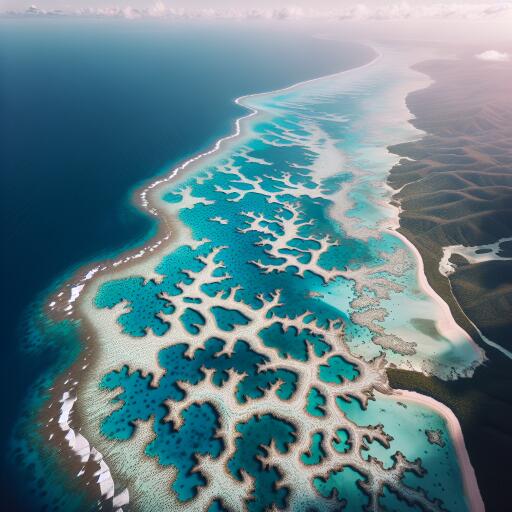
Australia’s Great Barrier Reef Hit by Record Bleaching
In a stunning yet somber revelation from the marine world, the Great Barrier Reef, Australia’s crown jewel of biodiversity, is currently undergoing a dire environmental crisis. The Reef, a sanctuary to an astounding range of life forms, from diminutive fish to the majestic sea turtles and tiger sharks, is experiencing one of its most severe coral bleaching events ever recorded.
Nestled off Australia’s northeast coast, Lizard Island serves as a pivotal research station for scientists like marine biologist Anne Hoggett, who have dedicated over three decades to studying this underwater paradise. However, the shift in the island’s ecological balance is palpable, with once vibrant coral gardens now turning into stark, bleached wastelands – a clear indication of the escalating impacts of climate change on marine life.
This bleaching phenomenon, marked by the expulsion of zooxanthellae – the symbiotic algae corals rely on for nourishment – transforms the corals into pale shadows of their former selves, signifying not just a color change but a fight for survival. Triggered by prolonged exposure to elevated sea temperatures exceeding the threshold by as much as two degrees Celsius, an estimated 80 percent of the coral around Lizard Island has already perished.
Historically celebrated for its unparalleled natural beauty and as a pivotal marine biodiversity hub, the Great Barrier Reef spans over 2,300 kilometers and is home to over 600 types of coral and 1,625 species of fish. It plays a critical role in maintaining the oceanic ecosystem’s balance and supports a booming tourism industry. Yet, the recurring incidents of mass bleachings over recent years have cast a long shadow over its future.
In a distressing trend, aerial monitoring has revealed extensive bleaching across more than 600 reefs within this marine park, with about 10 percent facing extreme distress. A phenomenon once observed every decade now unfolds annually, with notable events recorded in the last few years alone.
While reefs possess a remarkable ability to recover from such catastrophic events, the frequency and intensity of recent bleaching episodes have significantly narrowed the window for regeneration. Scientists warn that global coral cover could nosedive by as much as 95 percent if average temperatures continue to climb, underscoring the urgent need for comprehensive climate action.
Globally, efforts to mitigate coral bleaching encompass a wide array of strategies, from breeding resilient coral strains and enhancing cloud reflectivity to managing natural predators. Yet, experts argue these efforts, while crucial, fail to tackle the root cause of the problem: climate change.
Despite pouring billions into resilience-building and protective measures, the global community is continuously challenged by the relentless rise in greenhouse gas emissions, with Australia, a key coal and gas exporter, grappling with its climate policy direction.
As the international community watches, the Great Barrier Reef’s Fate remains in the balance, with its World Heritage Status up for review. Marine scientists like Hoggett, however, refuse to succumb to despair, driven by a deep-seated love and awe for the reef and its myriad inhabitants. Their perseverance and hope serve as a clarion call for concerted global action, a plea to cherish and protect one of the natural world’s most magnificent treasures before it’s too late.
The resilience of the Great Barrier Reef, coupled with a global commitment to addressing climate change, may yet offer a beacon of hope for this and other natural wonders around the world. It’s a reminder that the power to effect change rests not just with policymakers but with each of us, through the choices we make and the voices we raise in defense of our planet.





Leave a Reply